Swedish Easter Celebrations: History, Traditions & Delicious Food
When spring finally breaks through the long Nordic winter, Swedes
enthusiastically embrace Easter (Påsk) celebrations with a unique blend of
traditions that reflect the country's cultural evolution. While Easter
originated as a Christian holiday commemorating the resurrection of Jesus,
modern Swedish Easter celebrations have evolved into a largely secular affair
that incorporates pagan spring rituals, whimsical folklore, and—perhaps most
importantly—a spectacular food tradition that deserves special attention.
As a food-focused blog, we're particularly excited to guide you through the
culinary delights of Swedish Easter, but first, let's explore the fascinating
historical and cultural context that makes this celebration so special in
Sweden.
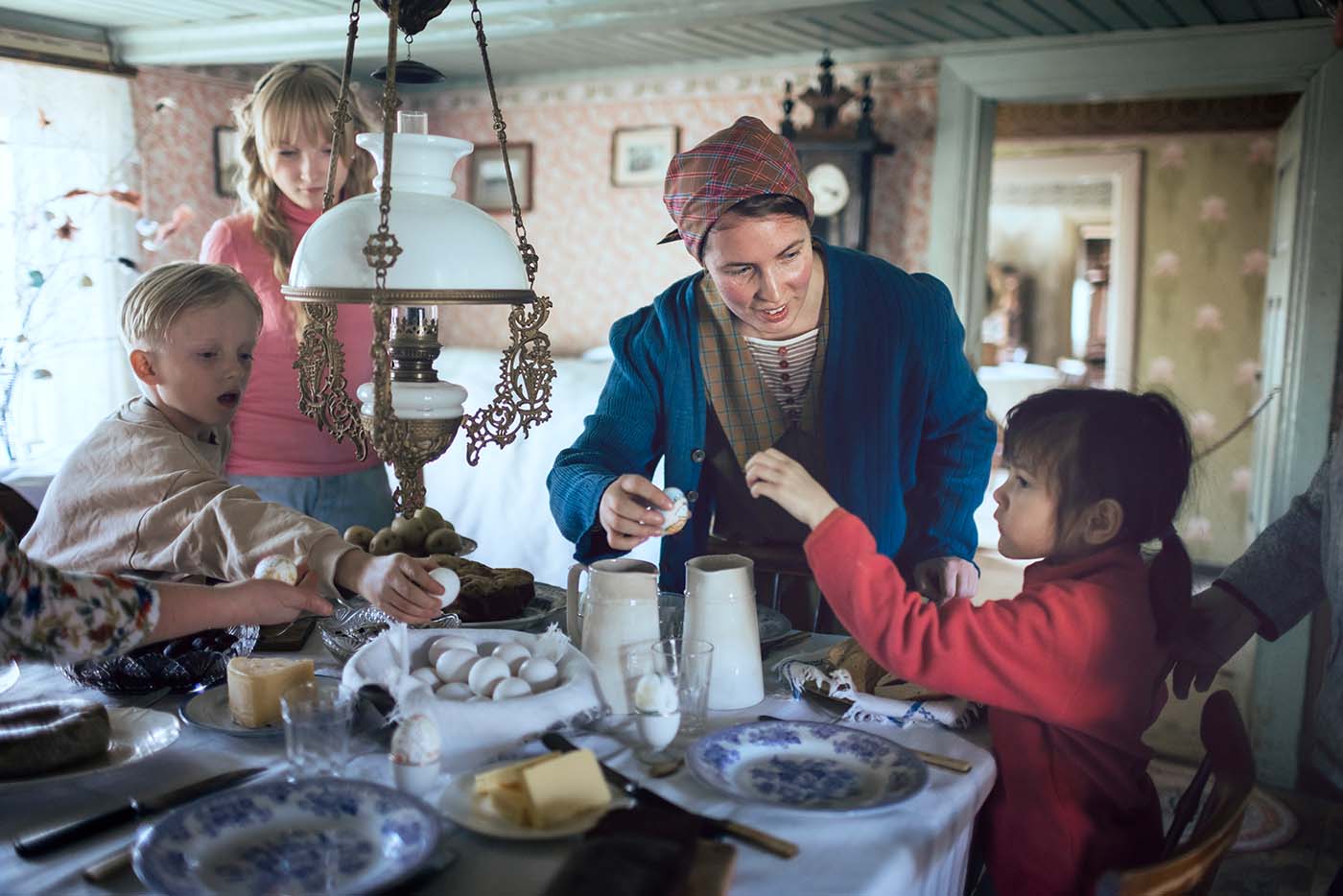
From Pagan Rituals to Christian Celebrations
Swedish Easter traditions weave together threads from both pagan and Christian
origins. Long before Christianity reached Scandinavia, ancient Norse people
celebrated the spring equinox, marking the return of light and the awakening of
nature after the harsh winter months. These celebrations honored fertility,
rebirth, and the goddess Freya.
When Christianity arrived in Sweden around the 11th century, the church
strategically incorporated existing pagan celebrations into the Christian
calendar. Easter became one of the most important religious holidays, but
retained many pre-Christian elements. This blending of traditions is evident in
many aspects of Swedish Easter, from the timing of celebrations to specific
customs that persist today.
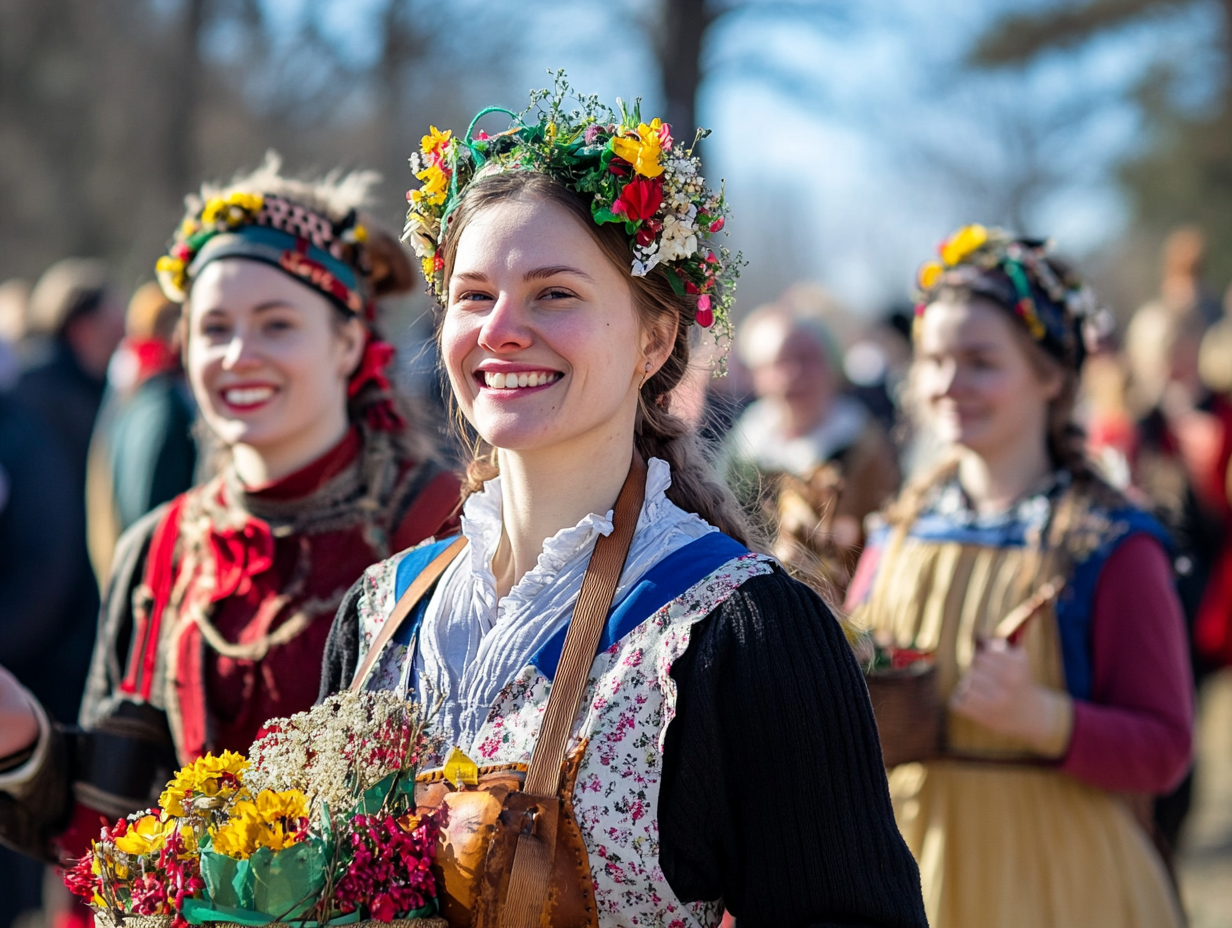
By the 20th century, as Sweden became increasingly secular, Easter evolved into
a cultural rather than religious holiday for most Swedes. Today, while some
Swedes do attend church services during Easter, the holiday is primarily a time
for family gatherings, traditional foods, and celebrations of spring's arrival.
Witches, Feathers, and Family Time
Modern Swedish Easter celebrations typically begin with the long Easter weekend,
starting with Skärtorsdagen (Maundy Thursday) and continuing through Annandag
Påsk (Easter Monday). Many Swedes take the opportunity to enjoy a mini-vacation,
often traveling to countryside cottages or visiting family.
One of the most charming Swedish Easter traditions involves children dressing up
as Easter witches (påskkärringar). With rosy-cheeked makeup, headscarves, and
old-fashioned skirts, these little witches go door-to-door with decorated twigs,
exchanging handmade Easter cards for candy. This tradition stems from old
folklore about witches flying to Blåkulla (a legendary meadow) on broomsticks to
dance with the devil during Easter week—a belief so strong that in the past,
Swedes would light fires to scare the witches away!

Decorations play an important role in creating the Easter atmosphere. Homes are
adorned with:
- Colorful feathers attached to birch twigs (påskris), representing spring's new
growth - Painted eggs hanging from branches or arranged in decorative displays
- Yellow and green tablecloths, napkins, and candles symbolizing spring colors
- Decorative Easter witches and chickens made of paper or fabric
These vibrant decorations transform Swedish homes after the monochrome winter
landscape, creating a festive atmosphere that celebrates the return of color and
life.
A Feast for the Senses
Now, let's dive into what makes Swedish Easter particularly special for food
enthusiasts—the magnificent Easter table laden with traditional delicacies.
The Egg at the Center
No Swedish Easter would be complete without eggs, which feature prominently in
both decorations and cuisine. Eggs symbolize fertility and new life, connecting
to both pagan and Christian symbolism. During Easter, the average Swede consumes
significantly more eggs than usual, with many families enjoying egg-centered
dishes throughout the holiday.
Hard-boiled eggs are decorated through various techniques, from simple food
coloring to more elaborate designs using natural dyes from onion skins,
beetroot, or blueberries. These decorated eggs serve dual purposes as both table
decorations and food.

Ägghalvor (halved eggs) are a quintessential part
of the Swedish Easter table. Swedes typically top their halved eggs with
mayonnaise and either tiny North Atlantic shrimp with fresh dill or with red or
black caviar and finely chopped chives. The shrimp and dill combination offers a
delicate sweetness that complements the richness of the egg, while the caviar
version provides a satisfying saltiness enhanced by the mild onion flavor of the
chives. These beautifully presented egg halves often form the centerpiece of the
cold buffet, arranged in concentric circles on decorative platters.
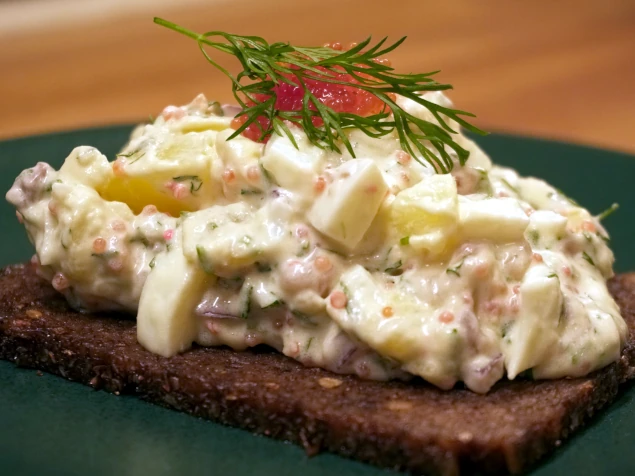
Another beloved classic is Gubbröra (literally "old
man's mix"), a sophisticated mixture of chopped eggs, anchovies, and fresh dill
served on dark rye bread. This distinctive dish balances savory, salty, and
herbaceous notes, showcasing how Swedes transform humble ingredients into
something truly special. The anchovies used are typically the Swedish variety
(sprats), which are sweeter and less intensely salty than Mediterranean
anchovies.
The Easter Smörgåsbord
The Swedish Easter table resembles a modified version of the
Christmas smörgåsbord (julbord), typically featuring cold dishes
arranged for guests to serve themselves buffet-style. The Easter smörgåsbord
(påskbord) often includes:
Pickled Herring Varieties (Sill)
Herring is a staple of Swedish celebrations, and Easter is no exception. Several
varieties might appear on the Easter table, with
Senapssill (mustard herring) holding particular
significance during the Easter season. This golden-hued delicacy combines the
silky texture of herring with a sweet-savory mustard sauce infused with aromatic
spices like allspice and cloves. The balance of sweetness, tanginess, and umami
makes it a standout dish that Swedes eagerly anticipate each Easter.
Branteviksill, a special Easter herring preparation named after a fishing
village in southern Sweden, deserves special mention. This elaborate version
combines herring with eggs, apples, red onions, and a blend of spices and herbs
that create layers of flavor. Made days in advance to allow the flavors to meld,
Branteviksill represents the care and tradition that goes into preparing the
Easter table. Its complex taste profile—simultaneously sweet, sour, savory, and
aromatic—demonstrates why herring remains the cornerstone of Swedish festive
cuisine.
Other popular varieties include Löksill (onion herring),
Dillsill (dill herring), and Matjessill (matjes herring). All are typically
served with boiled potatoes, sour cream, chives, and crispbread.
Salmon Dishes
Salmon holds a special place on the Swedish Easter table, prepared in various
ways that showcase its versatility and the Swedish mastery of fish preparation.
Gravlax (cured salmon with dill) stands as perhaps the
most iconic Swedish salmon dish. This delicacy dates back to the Middle Ages
when fishermen fermented salmon by burying it in the sand (the word "grav" means
grave). The modern version cures fresh salmon filets in a mixture of salt,
sugar, and copious amounts of dill. The result is a buttery-soft, velvety
textured salmon with complex flavors that develop over several days of curing.
Served with hovmästarsås, a dill-mustard sauce that cuts through the richness of
the fish, gravlax represents the perfect balance of flavors and textures that
characterizes Swedish cuisine.
Inkokt lax (poached salmon) offers a different but equally beloved preparation.
The salmon is gently poached in a court-bouillon infused with white wine, white
peppercorns, and bay leaves. This delicate cooking method preserves the salmon's
moisture while infusing it with subtle aromatics. Served cold with a
cucumber-dill sauce called skarpsås and new potatoes, this dish embodies the
Swedish approach to spring cooking—light, fresh, and celebration of seasonal
ingredients.
Other salmon preparations include Varmrökt lax
(hot-smoked salmon) and Kallrökt lax (cold-smoked salmon), each bringing
different flavor profiles to the Easter table.
Lamb Specialties
Lamb, symbolizing sacrifice in Christian tradition, is the traditional Easter
meat:
- Lammstek (roasted lamb with garlic and herbs)
- Lammfärsbiffar (lamb patties with mint)
- Lammracks (rack of
lamb)
These dishes often feature springtime herbs like mint, rosemary, and thyme.
Other Traditional Components
The Easter table also features Janssons frestelse
(Jansson's temptation), a potato and anchovy casserole that tells a story of
Swedish culinary history. Despite its name suggesting a connection to a person
called Jansson, its origins remain shrouded in mystery. The dish combines thinly
sliced potatoes with onions, bread crumbs, and Swedish sprats (small fish often
mistranslated as anchovies) in cream, baked until golden and bubbling. The
result is a savory, creamy dish where the potatoes melt in your mouth and the
sprats provide bursts of umami flavor. Though more commonly associated with
Christmas, many families consider it essential for Easter as well, demonstrating
how deeply ingrained traditional dishes are in Swedish celebrations regardless
of the specific holiday.
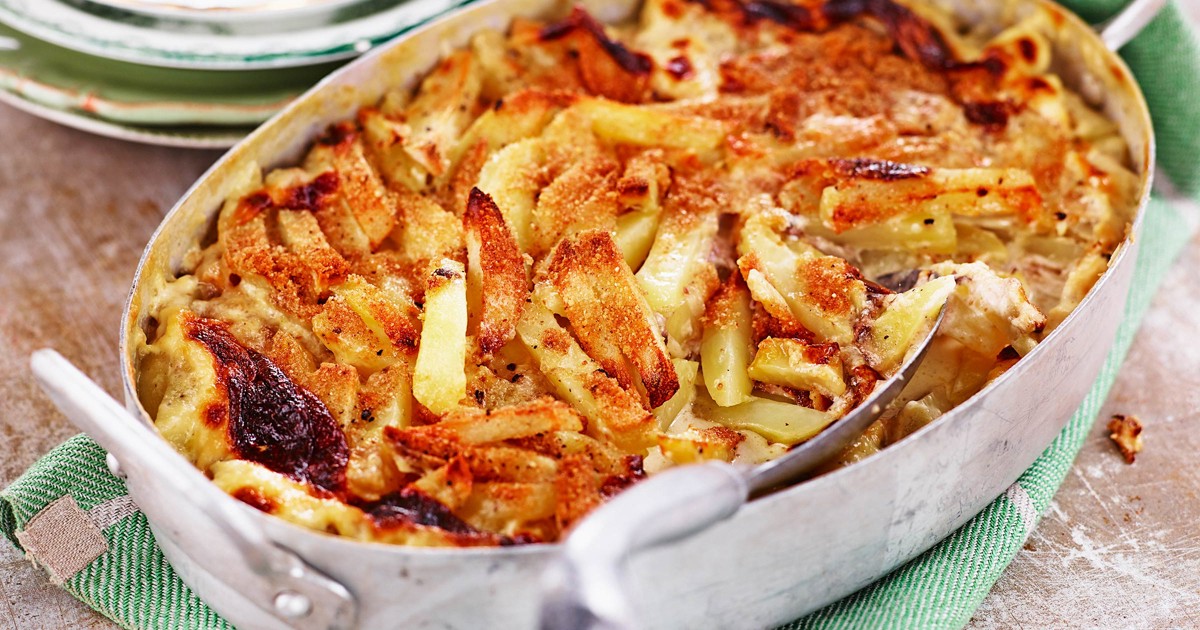
Other staples include prinskorv (small sausages), köttbullar (Swedish
meatballs), various cheeses (particularly Västerbotten, Sweden's "king of
cheeses" with its complex, slightly bitter flavor profile), knäckebröd (crisp
bread) and vörtbröd (a spiced bread), and fresh spring vegetables like asparagus
and radishes.
Easter Desserts and Sweets
The Swedish Easter table isn't complete without sweet treats:
- Påskmust (a special Easter soda similar to julmust, the Christmas beverage)
- Semla (though primarily associated with Shrove Tuesday, some families enjoy
these cardamom-spiced buns with almond paste and whipped cream during Easter) - Chocolate eggs and bunnies
- Marzipan eggs and fruits
- Påskgodis (Easter candy) including chocolate, licorice, and fruit-flavored
sweets
Regional Variations
While these foods form the core of Swedish Easter cuisine, regional variations
exist:
- In Skåne (southern Sweden), special Easter soups featuring dried fruits are
traditional - In northern Sweden, reindeer might replace lamb as the primary Easter meat
- Coastal communities often feature more seafood beyond the traditional herring
and salmon
Children's Easter Traditions
Swedish Easter is particularly magical for children. Beyond dressing as
påskkärringar (Easter witches), children eagerly anticipate the arrival of the
påskägg (Easter eggs). These aren't ordinary eggs but large decorative creations
made of paper or cardboard, beautifully adorned with Easter motifs and filled
with a treasure trove of candy. Parents present these colorful eggs to their
children, though increasingly, the Easter bunny (påskharen) gets the credit—a
relatively recent tradition imported from other cultures but embraced with
typical Swedish adaptability.
Easter egg hunts, while not as deeply rooted in Swedish tradition as in
Anglo-Saxon countries, have gained popularity in recent years. Families hide
small chocolate eggs throughout homes and gardens, creating excitement as
children search for these sweet treasures. The activity perfectly combines the
joy of discovery with the centrality of eggs in Easter symbolism.
Children also actively participate in Easter preparations, creating handmade
Easter cards with traditional motifs, helping to decorate eggs using various
techniques, and assisting with the preparation of Easter decorations. These
creative activities connect younger generations to traditions that have been
practiced for centuries, ensuring cultural continuity while creating cherished
family memories.
The Swedish Easter Experience
What makes Swedish Easter particularly special is how it blends traditions from
different eras into a cohesive celebration that honors the past while embracing
modernity. Unlike countries where Easter remains primarily religious, Sweden's
approach reflects its largely secular society that nevertheless values cultural
traditions.
Food stands at the center of this cultural continuity. The Easter smörgåsbord
brings families together to share meals that have been enjoyed for generations,
creating connections across time. Even as other aspects of life modernize
rapidly, these food traditions provide a comforting link to Swedish heritage.
For visitors experiencing Swedish Easter for the first time, the absence of
religious emphasis might be surprising, but the rich tapestry of food,
decorations, and folklore offers a different kind of depth—one that celebrates
community, the changing seasons, and the simple joy of gathering around a
beautifully prepared table.
Create Your Own Swedish Easter Table
If you're inspired to bring Swedish Easter traditions into your home, start with
these food essentials:
- Pickled herring (available at specialty stores or easily made at home)
- Gravlax with dill-mustard sauce
- Hard-boiled eggs with creative toppings
- Boiled potatoes with dill
- A simple lamb dish
- Crisp bread and butter
- Västerbotten cheese
- Colorful decorations featuring birch twigs and feathers
With these elements, you can create an authentic Swedish påskbord that
celebrates spring with the distinctive flavors of Scandinavian cuisine. While
the påskkärringar may not come knocking at your door, the delicious food
traditions of Swedish Easter can travel far beyond Scandinavia's borders.
God Påsk! (Happy Easter!)
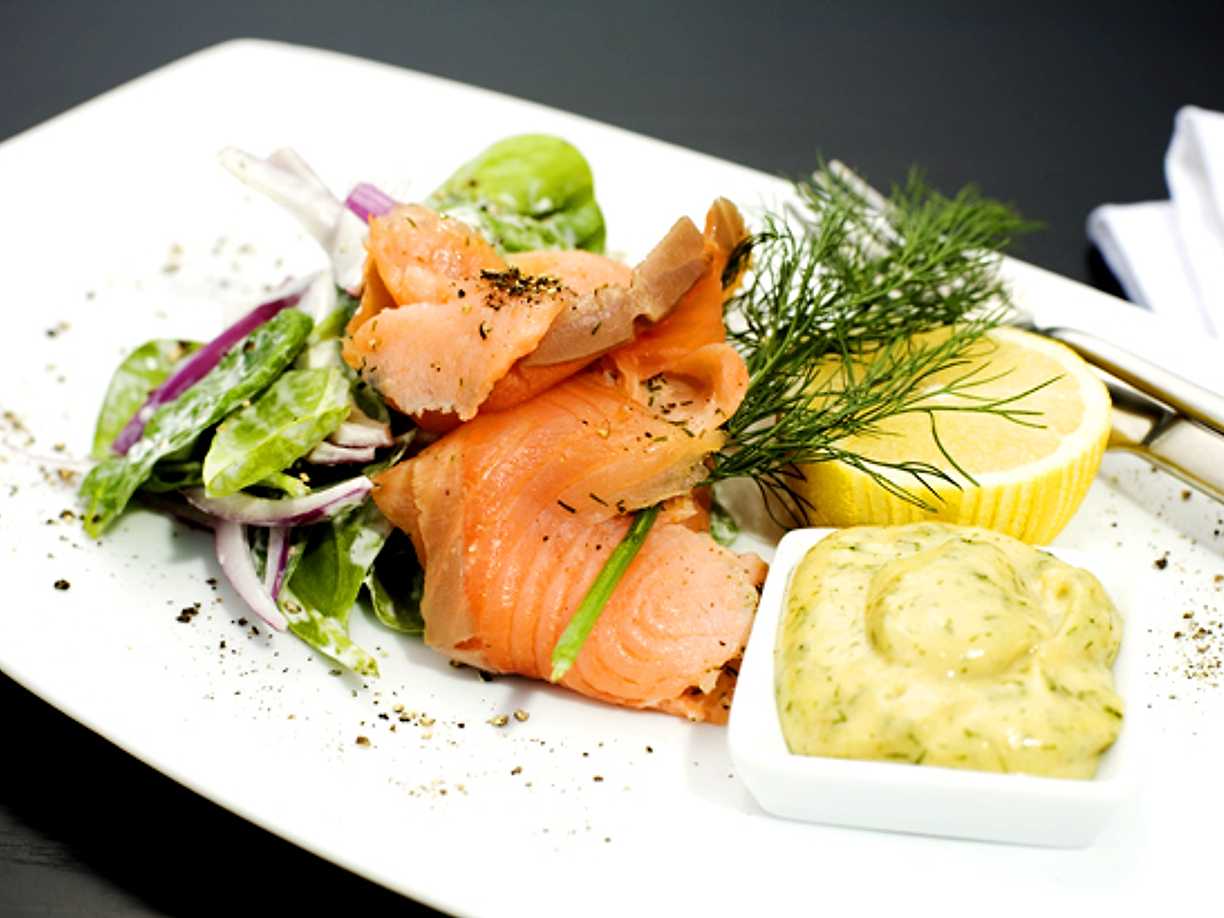
Recipe: Traditional Swedish Gravlax with Hovmästarsås
Ingredients:
- 2 equal-sized salmon fillets with skin (about 1 kg total)
- 3 tablespoons salt
- 2 tablespoons sugar
- 1 tablespoon crushed white peppercorns
- 1 large bunch fresh dill, roughly chopped
For the sauce:
- 3 tablespoons mustard (preferably Swedish sweet mustard)
- 1 tablespoon sugar
- 1 tablespoon white wine vinegar
- Salt and white pepper to taste
- 150 ml vegetable oil
- 3 tablespoons finely chopped dill
Instructions:
Check the salmon fillets for any remaining bones and remove them with
tweezers.Mix salt, sugar, and crushed peppercorns in a small bowl.
Place one salmon fillet skin-side down in a deep dish. Sprinkle the salt
mixture evenly over the flesh and cover completely with chopped dill.Place the second fillet on top, flesh-side down (creating a "sandwich" with
the dill and seasonings in the middle and skin on the outside).Cover the dish with plastic wrap and place a weighted board or plate on top
to press the fillets together.Refrigerate for 48-72 hours, turning the salmon package every 12 hours and
basting with any liquid that accumulates.For the sauce, mix mustard, sugar, and vinegar in a bowl. Gradually whisk in
the oil in a thin stream until the sauce thickens. Stir in the chopped dill,
season with salt and pepper.When ready to serve, scrape away the dill and seasonings. Slice the gravlax
thinly at an angle and serve with the hovmästarsås and lemon wedges.
This classic Swedish dish is perfect for your Easter table and can be prepared
days in advance, allowing you to focus on other elements of your celebration.
